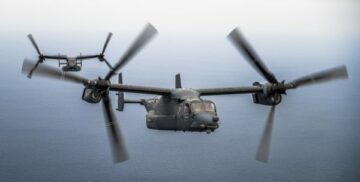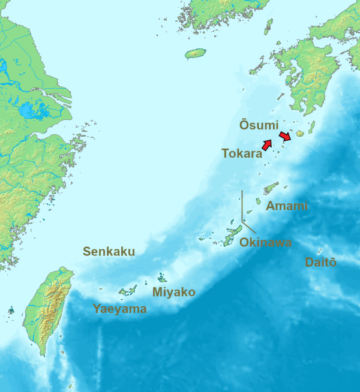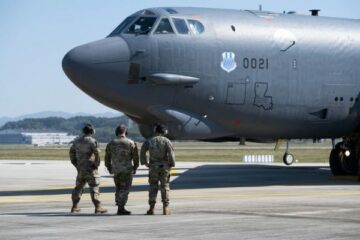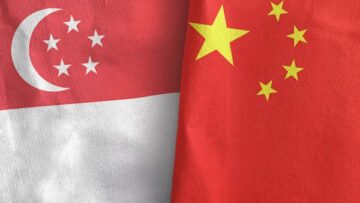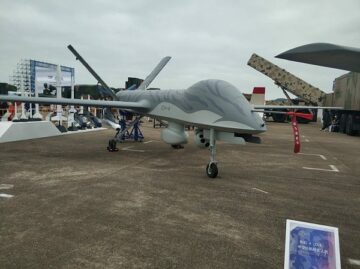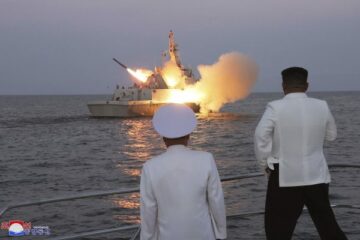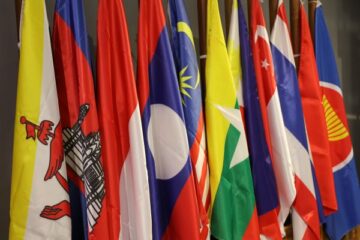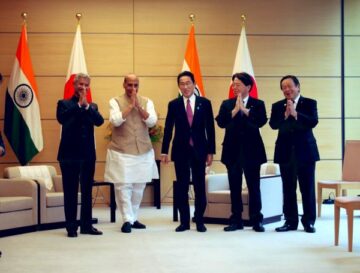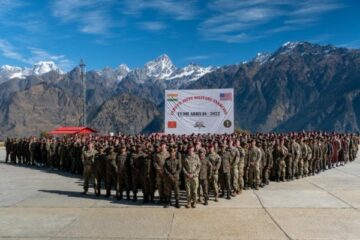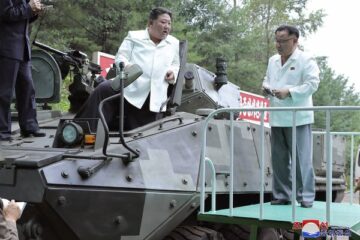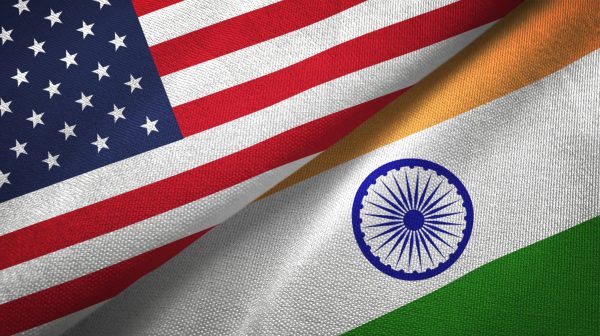
A recent report released by the Stockholm International Peace Research Institute (SIPRI) makes for interesting reading. It notes that India was the world’s top arms importer between 2019 and 2023, with its imports having gone up by 4.7 percent compared to the period between 2014 and 2018. The same report also notes that “although Russia remained India’s main arms supplier [accounting for 36% of its arms imports], this was the first five-year period since 1960–64 when deliveries from Russia [or the Soviet Union prior to 1991] made up less than half of India’s arms imports.”
This shows that although Russia is still India’s biggest weapons supplier, weapons sales from the U.S. to India have increased dramatically. India now buys a whole range of defense weaponry from the United States. This includes C-17 Globemaster III aircraft, AH-64 Apache attack helicopters, MH-60 Romeo helicopters, P8I Poseidon Maritime reconnaissance aircraft, and many more deals are in the works.
It is to be noted here that during Indian Prime Minister Narendra Modi’s landmark state visit to the U.S. in June last year, the U.S. company GE Aerospace inked a pact with Hindustan Aeronautics Limited (HAL) to jointly produce fighter jet engines for Indian Air Force’s Light Combat Aircraft (LCA)-Mk-II—Tejas. This is a landmark deal for both countries and could open doors for many more deals to come.
So, What Has Changed?
Russia (and its predecessor the Soviet Union) used to be the main source of weaponry for India, but now India is drawing from a wide variety of countries like the U.S., France and others like Israel. For India, the U.S. is a very important partner as it faces twin threats from Pakistan in its western flank and China on its northern flank.
The relations between India and the U.S. changed in the aftermath of the landmark U.S.-India nuclear deal of 2008 under which the U.S. agreed to do nuclear commerce with India, although India has not signed the Nuclear Non-Proliferation Treaty or the CTBT (Comprehensive Test-Ban Treaty).
The U.S. sees India as an indispensable partner as it seeks to counter an increasingly assertive China. Beijing under President Xi Jinping has made no bones about the fact that it wants a bigger say in the region. While the “hub and spokes” model has worked well for the United States in the past, no country in the Indo-Pacific region can make up for India because of its sheer size, the scale of its economy and its strategic heft.
Challenges
However, the challenge on the defense front between India and the U.S. will be the issue of technology transfer since India is now putting greater emphasis on its “Make in India” initiative, which aims at the indigenization of its defense weaponry.
In addition, India still continues to import weapon systems from Russia. New Delhi has ordered S-400 missile defense systems from Moscow. It has refused to back down in the face of threatened U.S. sanctions over the deal.
However, it is worth noting here that close to 60 percent of India’s overall in-service military arsenal is Russian in origin, even though in percentage terms, its arms imports from Russia between 2017 and 2022 have dropped from 62 percent to 45 percent. However, India will continue to rely on Moscow for technical support of its Russian weapons platforms. It is also collaborating with Russia for the manufacture of the BrahMoS missiles.
In addition, there is the Pakistan factor as the U.S. has supplied Pakistan with F-16 fighter jets, which have been used in actual fighting against India.
The Road Ahead
What remains certain is that defense relations between India and the U.S. will continue to grow irrespective of possible changes in governments at both ends. India and the U.S. must take incremental steps forward and focus on the low-hanging fruit first, before going in for the big items. The U.S. and India will also have to “ agree to disagree” on issues like Pakistan and Russia, keeping the long-term picture in mind. As they say, one must not miss the forest for the trees.
- SEO Powered Content & PR Distribution. Get Amplified Today.
- PlatoData.Network Vertical Generative Ai. Empower Yourself. Access Here.
- PlatoAiStream. Web3 Intelligence. Knowledge Amplified. Access Here.
- PlatoESG. Carbon, CleanTech, Energy, Environment, Solar, Waste Management. Access Here.
- PlatoHealth. Biotech and Clinical Trials Intelligence. Access Here.
- Source: https://thediplomat.com/2024/04/us-india-defense-ties-marching-ahead-fast/
- :has
- :is
- :not
- $UP
- 2008
- 2014
- 2017
- 2018
- 2019
- 2022
- 2023
- 4
- 45
- 60
- 62
- 7
- a
- About
- Accounting
- actual
- addition
- Aeronautics
- Aerospace
- aftermath
- against
- agree
- agreed
- ahead
- aims
- AIR
- aircraft
- also
- Although
- an
- and
- Apache
- ARE
- arms
- Arsenal
- AS
- At
- attack
- back
- BE
- because
- been
- before
- Beijing
- between
- Big
- bigger
- Biggest
- both
- but
- Buys
- by
- CAN
- certain
- challenge
- changed
- Changes
- China
- Close
- collaborating
- combat
- come
- Commerce
- company
- compared
- comprehensive
- continue
- continues
- could
- Counter
- countries
- country
- deal
- Deals
- Defense
- Delhi
- Deliveries
- do
- doors
- down
- dramatically
- drawing
- dropped
- during
- economy
- emphasis
- ends
- Engines
- Even
- Face
- faces
- fact
- factor
- FAST
- fighting
- First
- Focus
- For
- forest
- Forward
- France
- from
- front
- ge
- going
- gone
- Governments
- greater
- Grow
- Half
- Have
- having
- helicopters
- here
- However
- HTTPS
- iii
- import
- important
- imports
- in
- includes
- increased
- increasingly
- incremental
- india
- Indian
- indispensable
- Initiative
- inked
- Institute
- interesting
- International
- irrespective
- Israel
- issue
- issues
- IT
- items
- ITS
- Jets
- Jinping
- jpg
- june
- keeping
- landmark
- Last
- Last Year
- less
- light
- like
- Limited
- long-term
- made
- Main
- make
- MAKES
- many
- Maritime
- Military
- mind
- minister
- miss
- missiles
- model
- more
- Moscow
- must
- New
- no
- noted
- Notes
- noting
- now
- nuclear
- of
- on
- ONE
- open
- or
- Origin
- Others
- over
- overall
- Pakistan
- partner
- past
- peace
- percent
- percentage
- period
- picture
- Platforms
- plato
- Plato Data Intelligence
- PlatoData
- poseidon
- possible
- predecessor
- president
- Prime
- prime minister
- Prior
- produce
- Putting
- range
- Reading
- recent
- region
- relations
- released
- rely
- remained
- remains
- report
- research
- road
- Russia
- russian
- s
- sales
- Sanctions
- say
- Scale
- Seeks
- sees
- sheer
- Shows
- signed
- since
- Size
- Source
- soviet
- State
- States
- Steps
- Steps forward
- Still
- Strategic
- supplied
- supplier
- support
- Systems
- Take
- Technical
- technical support
- Technology
- terms
- than
- that
- The
- There.
- they
- this
- though?
- threats
- Ties
- to
- top
- transfer
- Trees
- twin
- u.s.
- under
- union
- United
- United States
- used
- variety
- very
- Visit
- wants
- was
- Weapons
- WELL
- Western
- What
- when
- which
- while
- whole
- wide
- will
- with
- worked
- works
- world’s
- worth
- xi
- xi jinping
- year
- zephyrnet

